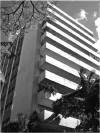Abstract
This paper studies a variant of Brazilian architecture which has been mistakenly called “international style”. Resulting formconverging influences such as Mies van der Rohe, Marcel Breuer, the Case Study House Program and Concretism, amongothers, it has been very early adopted in São Paulo, defining an alternative to the then prevailing “Corbusian-carioca” model.Its constructive tone searched out features like synthesis, rationalism, atemporality and, consequently, universality, gettingapart both from the corbusian matrix and the autochthonous bias which, together, have been answerable for that model’sinternational success.This alternative pattern of modern architecture spread its influence towards other regions in Brazil, including the city of PortoAlegre, which got in touch with it by means of the winning proposition at the competition for the Legislative Palace of Rio Grandedo Sul State (1958), designed by two architects from São Paulo. This project may be called a “dividing line” inside local architecturalproduction. Moreover, it consequently contributed to reveal this “turning point” to the supremacy of carioca schoolarchitecture in Brazil. In the fifties this supremacy started to be shared with that dissenting production.Apuntes is registered under a Creative Commons Attribution 4.0 International Public License. Thus, this work may be reproduced, distributed, and publicly shared in digital format, as long as the names of the authors and Pontificia Universidad Javeriana are acknowledged. Others are allowed to quote, adapt, transform, auto-archive, republish, and create based on this material, for any purpose (even commercial ones), provided the authorship is duly acknowledged, a link to the original work is provided, and it is specified if changes have been made. Pontificia Universidad Javeriana does not hold the rights of published works and the authors are solely responsible for the contents of their works; they keep the moral, intellectual, privacy, and publicity rights.
Approving the intervention of the work (review, copy-editing, translation, layout) and the following outreach, are granted through an use license and not through an assignment of rights. This means the journal and Pontificia Universidad Javeriana cannot be held responsible for any ethical malpractice by the authors. As a consequence of the protection granted by the use license, the journal is not required to publish recantations or modify information already published, unless the errata stems from the editorial management process. Publishing contents in this journal does not generate royalties for contributors.


